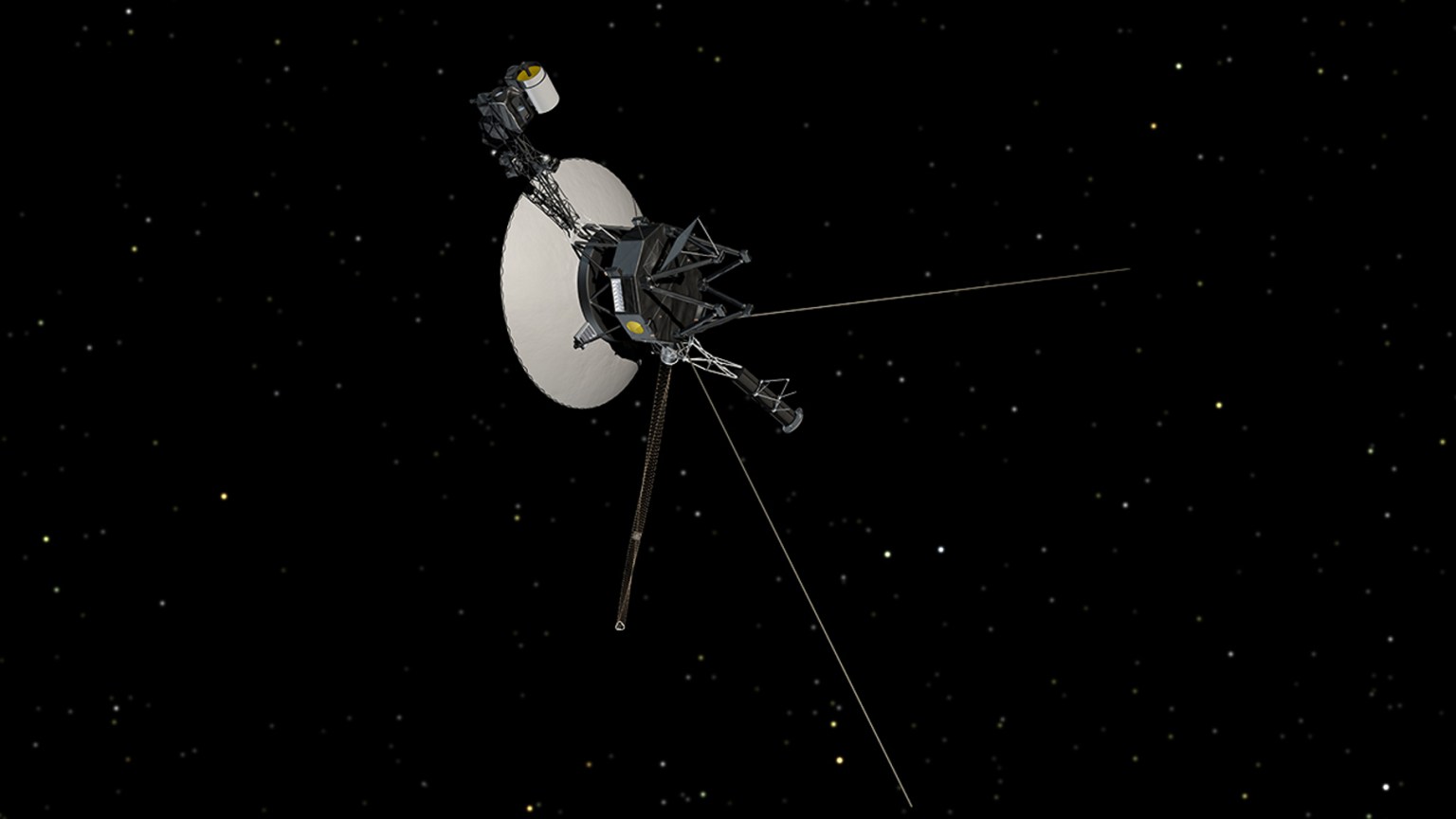NASA's highest honors were awarded in ceremony today at JPL to more than 70 indivduals and teams for their professional contributions to the successful Voyager spacecraft mission to Uranus.
The Voyager 1 and 2 spacecraft, designed, constructed and operated by JPL, were launched in 1977 and flew past Jupiter in 1979 and Saturn in 1980 and 1981, respectively. While Voyager 1 is on flight path that will take it out of the solar system, Voyager 2 continued beyond Saturn and flew past Uranus on Jan. 24, 1986. Many of today's awards went to individuals and teams responsible for some of the extraordinary engineering measures taken during the mission to ensure that the nine-year-old spacecraft world return more information from Uranus than would have otherwise been possible.
The Distinguished Service Medal, NASA's highest honor, was awarded to Richard P. Laeser, who has managed the Voyager Project for JPL since 1981. The award is presented to an individual "who, by distinguished service, ability, or courage, has personally made contribution representing substantial progress to aeronautical or space exploration in the interest of the United States."
Other awards and their recepients were: Outstanding Leadership Medal Douglas G. Griffith, Manager, Voyager Flight Operations, JPL. Charles E. Kohlhase, Manager, Voyager Mission Planning, JPL. William I. McLaughlin, Voyager Flight Engineering, JPL. Raymond B. Morris, Chief, Voyager Sequence Team, JPL. Allan L. Sacks, Manager, Voyager Ground Data System Engineering, JPL. Edward C. Stone, Voyager Project Scientist, Caltech. George P. Textor, Voyager Deputy Project Manager, JPL. Exceptional Engineering Achievement Medal Howard Marderness, Chief, Voyager Spacecraft Team, JPL. Robertson Stevens, Chief Engineer, JPL Office of Telecommunications and Data Acquisition
Exceptional Scientific Achievement Medal Herbert S. Bridge, Principal Investigator, Voyager Plasma Science Investigation, Massachusetts Institute of Technology. A. Lyle Broadfoot, Principal Investigator, Voyager Ultraviolet Spectrometer Investigation, University of Arizona. Jeffrey N. Cuzzi, Co-Investigator, Voyager Imaging Science Investigation, NASA/Ames Research Center. Larry W. Esposito, Co-Investigator, Voyager Photopolarimeter Investigation, University of Colorado. Rudolf A. Hanel, Principal Investigator, Infrared Radiometry and Spectrometry Investigation, NASA/Goddard Space Flight Center. Michael L. Kaiser, Voyager Planetary Radio Astronomy Investigation, NASA/Goddard Space Flight Center. Stamatios M. Krimigis, Principal Investigator, Voyager Low- Energy Charged Particles Investigation, Johns Hopkins University. Arthur L. Lane, Principal Investigator, Voyager Photopolarimeter Investigation, JPL. Frank B. McDonald, Co-Investigator, Voyager Cosmic Ray Investigation, NASA Headquarters. Ellis D. Miner, Voyager Deputy Project Scientist, JPL. Norman F. Ness, Principal Investigator, Voyager Magnetic Fields Investigation, NASA/Goddard Space Flight Center. Frederick L. Scarf, Principal Investigator, Voyager Plasma Wave Investigation, TRW. Bradford A. Smtih, Principal Investigator, Voyager Imaging Science Investigation, University of Arizona. Laurence A. Soderblom, Co-Investigator, Voyager Imaging Science Investigation, U.S. Geological Survey. G. Leonard Tyler, Principal Investigator, Voyager Radio Science Investigation, Stanford University. James W. Warwick, Principal Investigator, Voyager Planetary Radio Astronomy Investigation, Radiophysics, Inc.
Exceptional Service Medals were received by 35 individuals "for significant achievement or service characterized by unusual initiative or creative ability that clearly demonstrates substantial improvement in engineering, aeronautics, and space endeavors, or administration and support of these endeavors which contribute to the programs of NASA."
Public Service Medals were given to individuals from the following companies contracted to JPL for their efforts during the Uranus leg of the Voyager mission: Federal Electric Corp., Australian Department of Science, Boeing, CDI Corp., Australian Department of Science, TELOS, and consultant Donald J. Lynn.
Group Achievement Awards went to the following: the Voyager Flight Team, the Voyager Science Investigation team, Documentation, Duplicating Support, Photographic Support, Public Affairs, Secretarial Support, Management Support, Computer Graphics, Printing Services, and Security. Group Achievement Awards also went to spacecraft engineers responsible for "Extraordinary Voyager Uranus Mission Engineering," and to those responsible for combining Australia's Parkes Radio Astronomy Telescope with the JPL/NASA antenna system during the Uranus encounter.



























